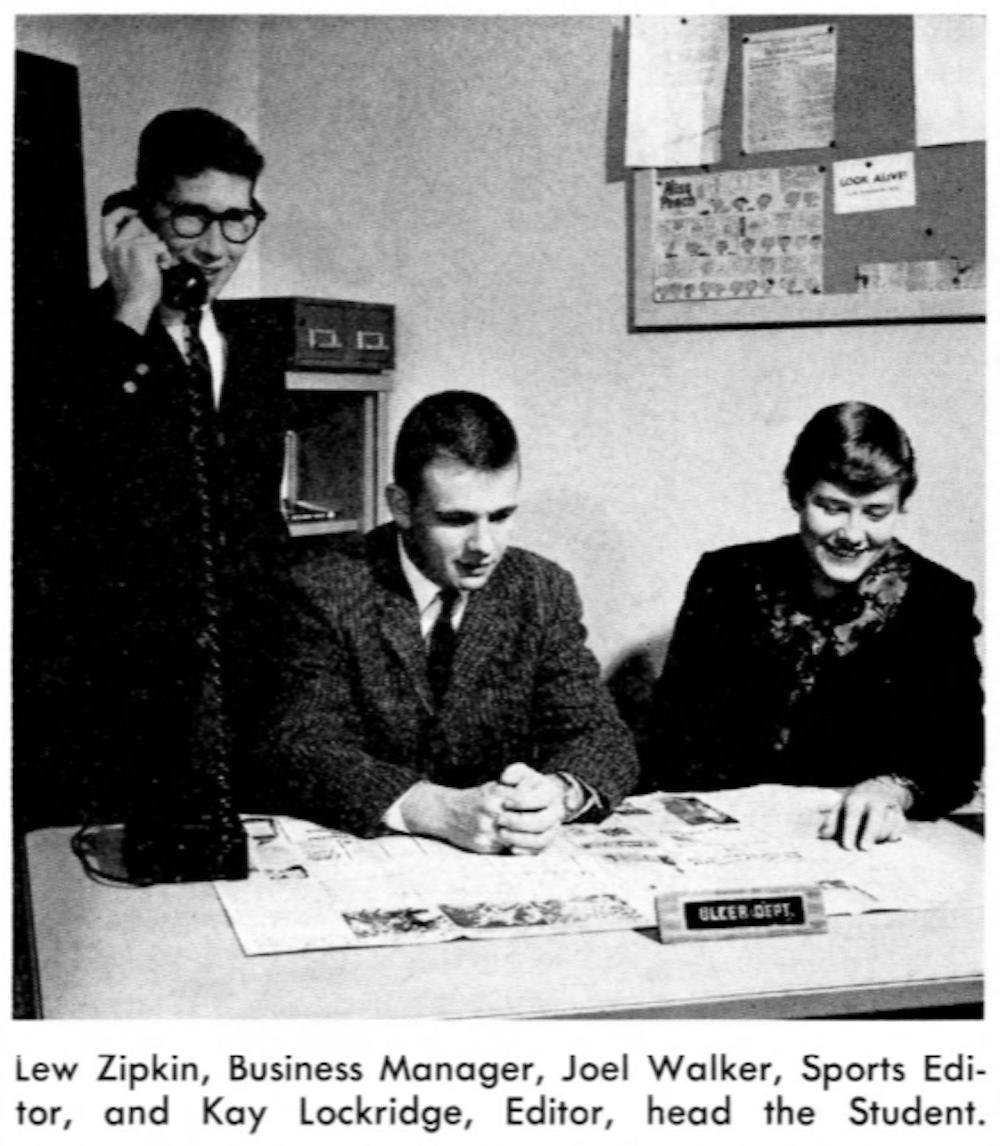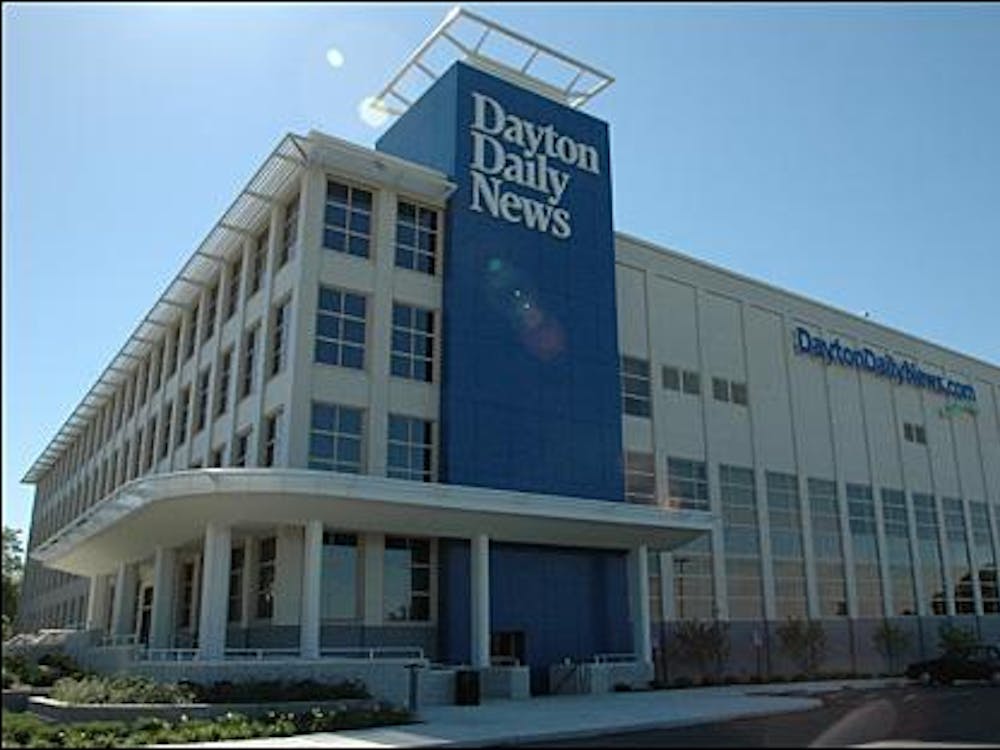Miami University was in my DNA long before I was born. My mother, who attended – and graduated from – Indiana University (IU), traveled over to Oxford from Bloomington, Indiana, in the ’20s to visit friends and look at the campus. She said she fell in love with Miami University, but she also had fallen for my father, who attended and graduated from IU, so she stayed there. Yet, she never got over Miami, and I heard about it early on. In fact, I visited Oxford, too, during my junior year in high school in Illinois.
The deal was sealed when the managing editor of the Chicago Tribune, for whom I worked as a suburban correspondent while in high school in the 1950s, urged me to attend a small liberal arts school with a student newspaper, of which I could become editor.
I’ll never forget W. D. Maxwell’s words: “If you, a girl, attend a large university,” – I had applied to and been accepted at the Medill School of Journalism at Northwestern and the J-school at Indiana University – “you can take all the journalism classes they offer, but they will never let you be editor [of] the student newspaper, and you need that experience.”
Maxwell was an old-school journalist who didn't believe in journalism education anyway, but he loved all forms of newspapers.
“Instead,” he said, “go to a good, small liberal arts college … major in history, economics or political science, and begin working on the student paper immediately. You can make a difference.”
And, I did just that: After arriving in Oxford on a hot, humid late-August day in 1957, I went to The Miami Student office in the new student center the first full day I was on campus. I was there every day until four years later, and I served as editor of The Student my senior year and majored in what both Miami and Harvard University at the time called government (not political science, because "politics comprise an art, not a science").
From Miami, I immediately enrolled at Syracuse University for the master's program in journalism. With a fellowship from the New York State Society of Newspaper Editors (NYSSNE), for whom I worked for the two years in graduate school, I gained the master's that I knew I would need at some point later on to teach journalism at the university level.
The experience and connections I gained through the NYSSNE led me to The Associated Press (AP) in Buffalo, New York, which in two years paved the way to the Albany, New York, bureau. It had been my immediate goal to cover New York state legislature and then move on to Washington, D.C.
After four years covering state government (and former Gov. Nelson Rockefeller), I decided that Washington would be only more of the same … lots more. I changed direction, fulfilling the plan to teach journalism at the college level. Michigan State University, which had and has a top-notch J-School, appreciated both my experience and master's degree.
Four years later, in 1973, I was on my way to the Big Apple – New York City, the borough of Manhattan. While in Lansing, Michigan, I freelanced for the local paper – The Lansing State Journal – as well as national magazines. With those credentials in hand, I built a 24-year career in freelancing, including for AP Newsfeatures, and adjunct teaching at the city's various colleges and universities.
Santa Fe, New Mexico, beckoned in the early ’90s, and my partner, Roslyn Pulitzer, a native New Yorker who had an established psychotherapy practice, and I finally pulled up stakes and moved to the City Different in 1997. Once established, I began writing news features regularly for The Santa Fe New Mexican, the oldest newspaper west of the Rockies.
Roslyn, who had long had an interest in photography – she had been a night-club photographer in Manhattan in the 1940s and ’50s as a young adult – decided to pursue fine art photography, resulting in several shows in Santa Fe galleries and the cover of a book of photography, "Visions of Santa Fe," edited by Baron Wolman, Rolling Stone's first photographer.
Enjoy what you're reading?
Signup for our newsletter
With long-held appreciation for Miami, I began annual contributions to the university upon graduation in 1961. When Roslyn died in 2020 (the first person to die of COVID in Santa Fe and noted by the Washington Post), I began thinking about not just where I had been but about what I might leave behind that would make a difference. Thus was born the idea of legacy.
Working with Miami's gift-planning team, we put together a bequest that would both endure and honor both my experience as well as Roslyn's. That legacy will strengthen The Miami Student (no matter what form it takes), ensuring that it remains a thriving, independent training ground for young journalists.
It will create hands-on learning experiences, allowing students to step beyond the classroom and campus into the real world of reporting. It also will establish scholarships within the College of Arts and Sciences, with a special focus on journalism students. This scholarship will bear the name of Roslyn K. Pulitzer, honoring the woman who shared almost half of my life, my passion and my unwavering belief in the power of storytelling.
Beyond an investment in journalism, it honors truth and the courage to seek it by the future reporters who will go on to challenge, inform and inspire. I chose to honor the institution that set me on this path and, in doing so, I hope to ensure that countless other students will have a chance to find their own way, and make a difference.
Journalist Kay Lockridge has covered breaking news, both locally and nationally, and has taught others how to do it for almost three-quarters of a century. Newspapers, magazines and The Associated Press have carried her byline, and institutions such as Michigan State University have provided her with classrooms of eager students.




